
The first time I saw a lionfish was in Egypt. It was absolutely one of the most beautiful things I had ever seen underwater. The majestic “mane” of this fish was stunning as I swam up to the lionfish. It wasn’t until years later I heard anything again about the lionfish. But this time the fish was nothing short of a hideous menace destroying the Caribbean reef.
I quickly understood the danger of these fish to their non-native habitat and supported the efforts to get them out of the Caribbean. (This is a big deal since I am a vegetarian who doesn’t eat any fish or sea life at all.)
In case you don’t know about lionfish here are some quick facts:
- Lionfish reproduce at a rate of about 2 million eggs per year. Their larvae have a much higher survival rate than other sea life.
- Lionfish eat anything and everything. They even eat the small cleaner fish nothing else eats.
- Outside of their native Indian Ocean, Red Sea, Southern & Western Pacific Ocean they have no predators.
- Because of the amount of fish life they are consuming the reefs are dying, fisherman are in danger of not having fish to catch, turtles and other creatures who need to be cleaned in order to survive are losing their cleaners to the apetite of the lionfish.
- They are threatening the diving industry, fishing industry, tourism industry, and diets of the people in the Caribbean, the U.S., South America, Central America and now the Mediteranean sea by eating the fish life which sustain these industries.
- They can survive for up to 3 months without food and only lose 10% of their body mass. They can also live for up to 15 years, all the while consuming massive amounts of fish life.
- Invasive lionfish are out-breeding, out-competing and out-living native fish stocks and other marine species. The consequences impact the food security and economies affecting over a hundred million people, according to this incredibly informative blog.
- Lionfish are now eating so much they are developing liver disease. Info from this site.
- Lionfish are now even eating themselves according to this site.
- Lionfish have venomous spines which have been said to make grown men cry when they are “stung”.

We have been hearing a lot about divers hunting these fish on our different dive trips. My husband has been desperate to go on one of these hunting trips. So when we found out Utopia Village is hunting lionfish to help decrease the poplulation he couldn’t wait to see how it is done.
For me it was a very mixed experience. I was not happy to see a living creature killed but by the same token I know the harm they are doing and at the end of the day they must be eradicated if there is much hope for the reef, the fish life, and the humans which depend on the reef and fish for survival.
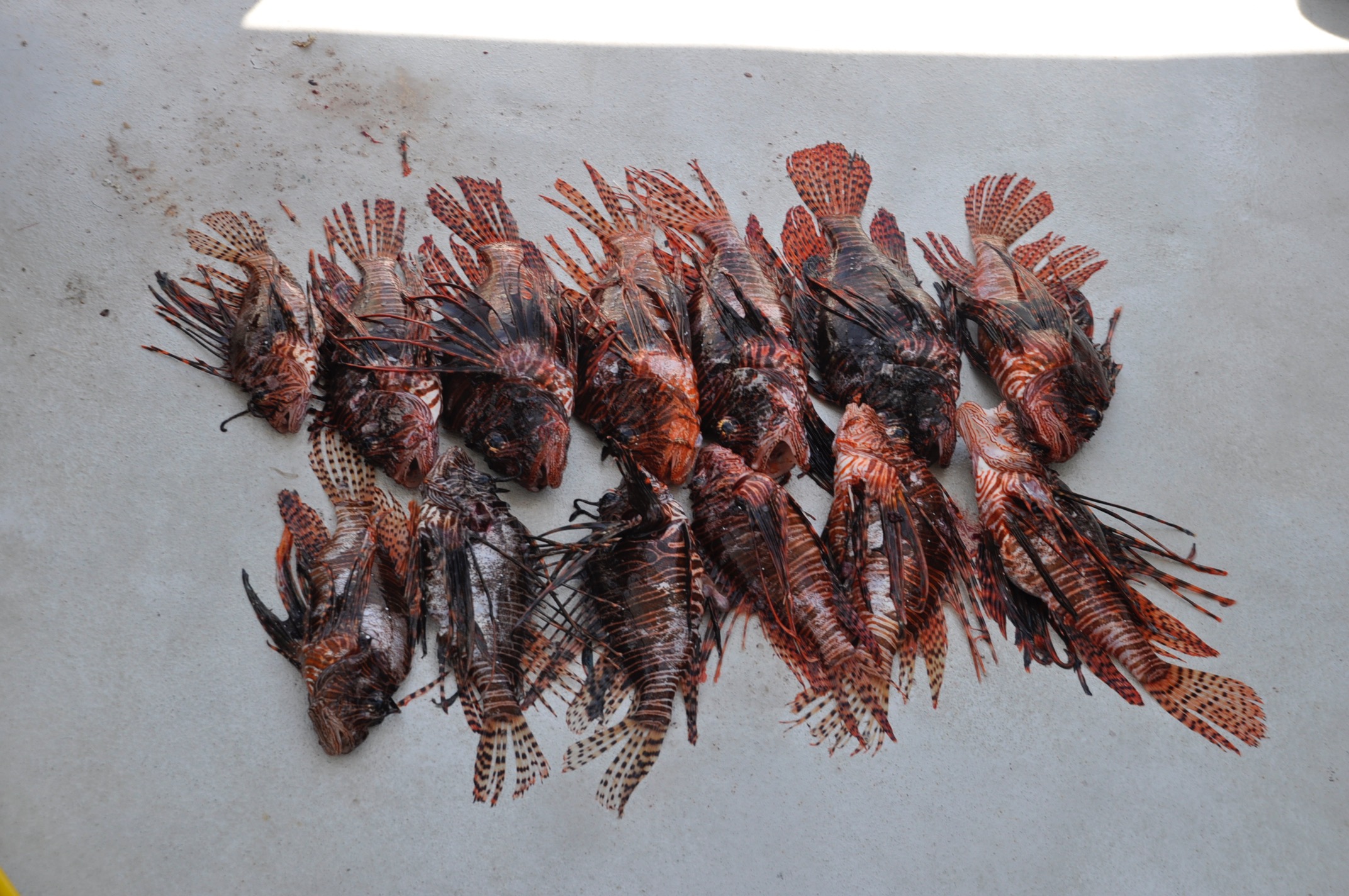
We saw about 18 lionfish killed in 3 days, one even fed to a shark as we watched. The amazing chef at Utopia Village made lionfish ceviche which every meat eater raved about. (Evidently it is a delicious fish, and it has a really high Omega-3 count so it is really healthy too.)
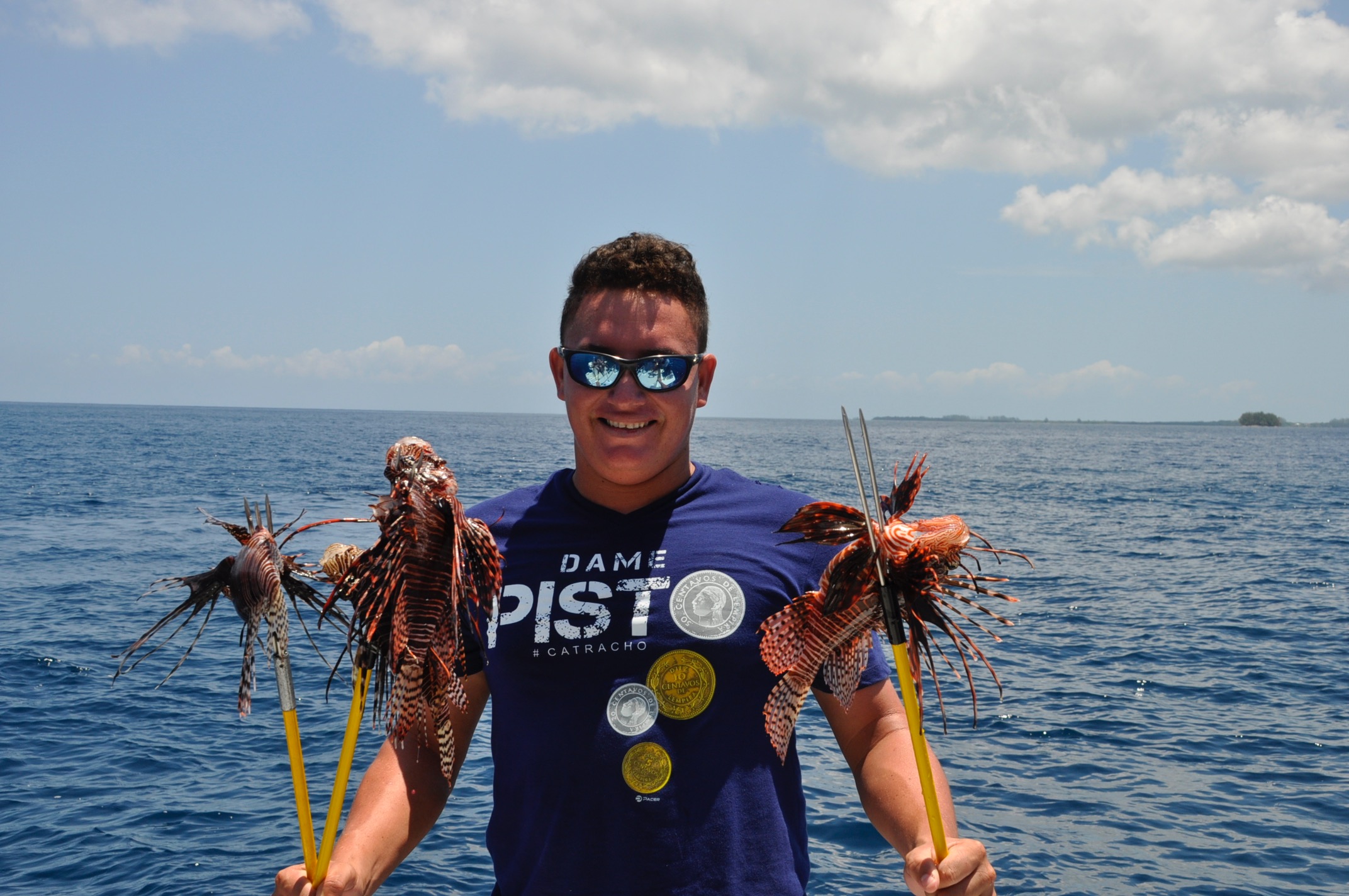
Underwater watching the spears come out, and pierce these beautiful fish was hard for me. It was so abrupt and forceful. I watched them men change as they watched the dive master kill. There was cheering and celebration through our masks at they collected the fish, forced them into the PVC tubing and carry them to shore. I focused on the beauty surrounding me as a reminder of why this was so important. However, once we were on the boat and I saw these fish, and was reminded of the destruction I was quite proud of what tiny little bit we had done that day to make a difference in Utila.
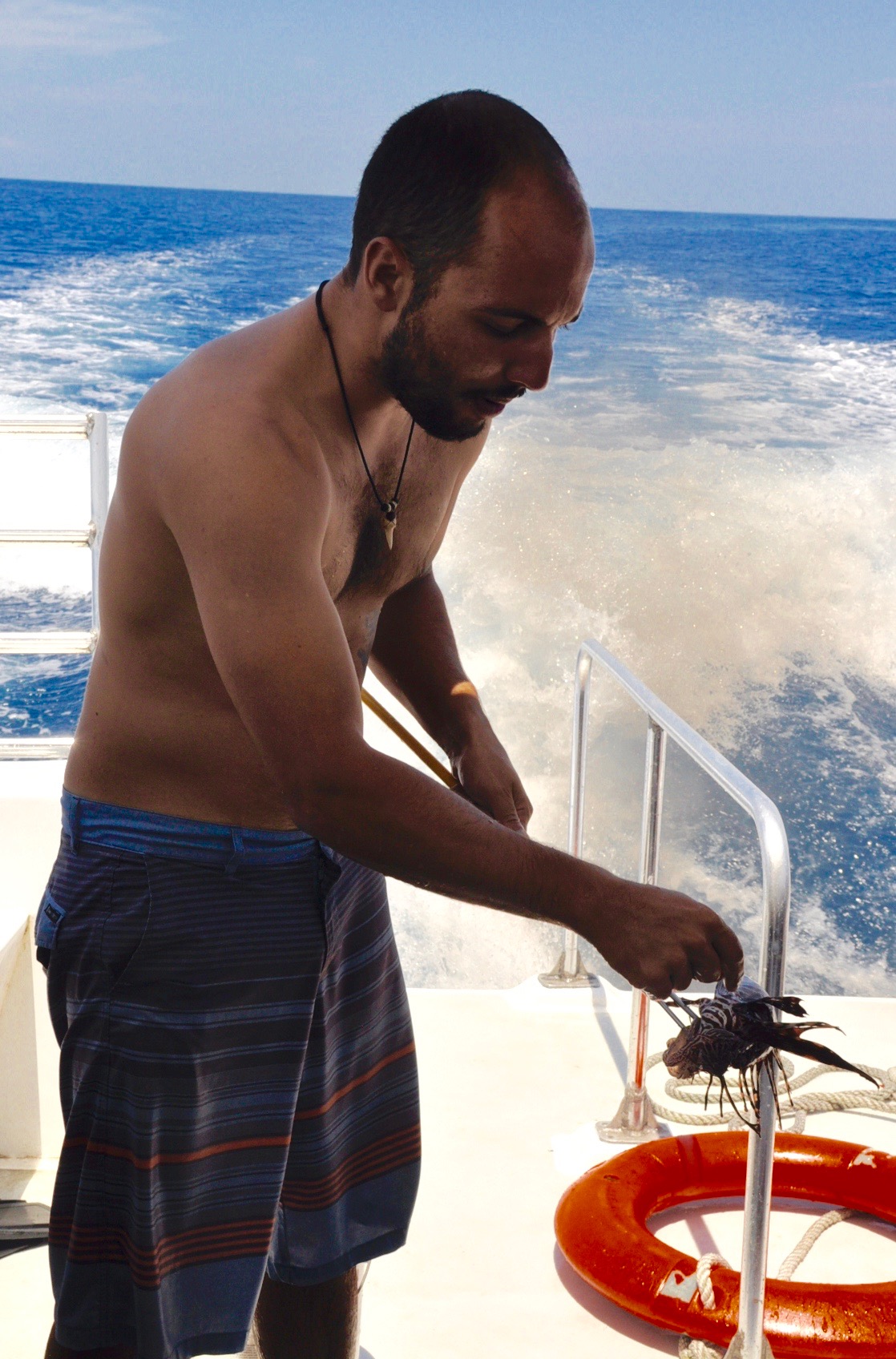

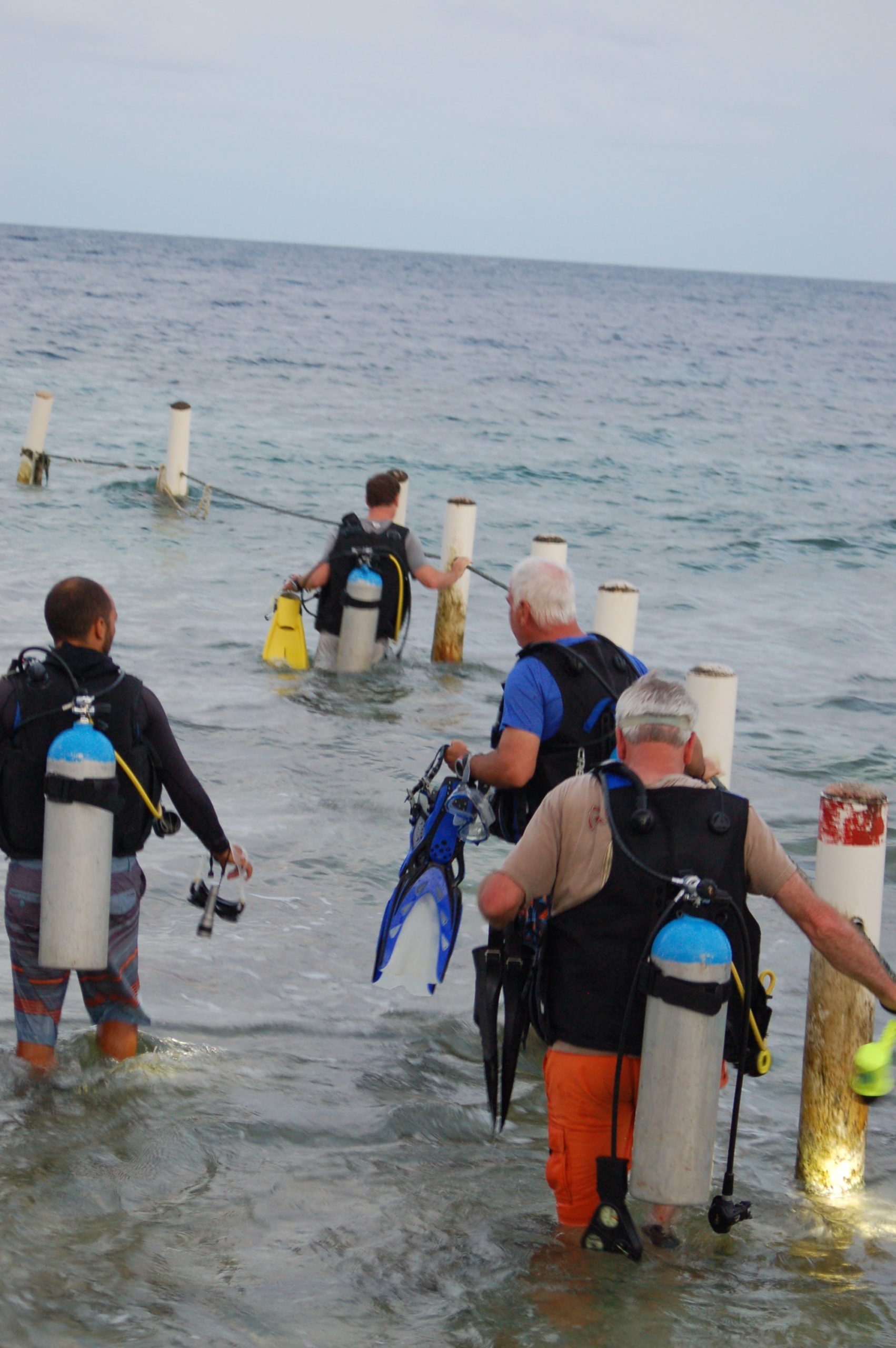
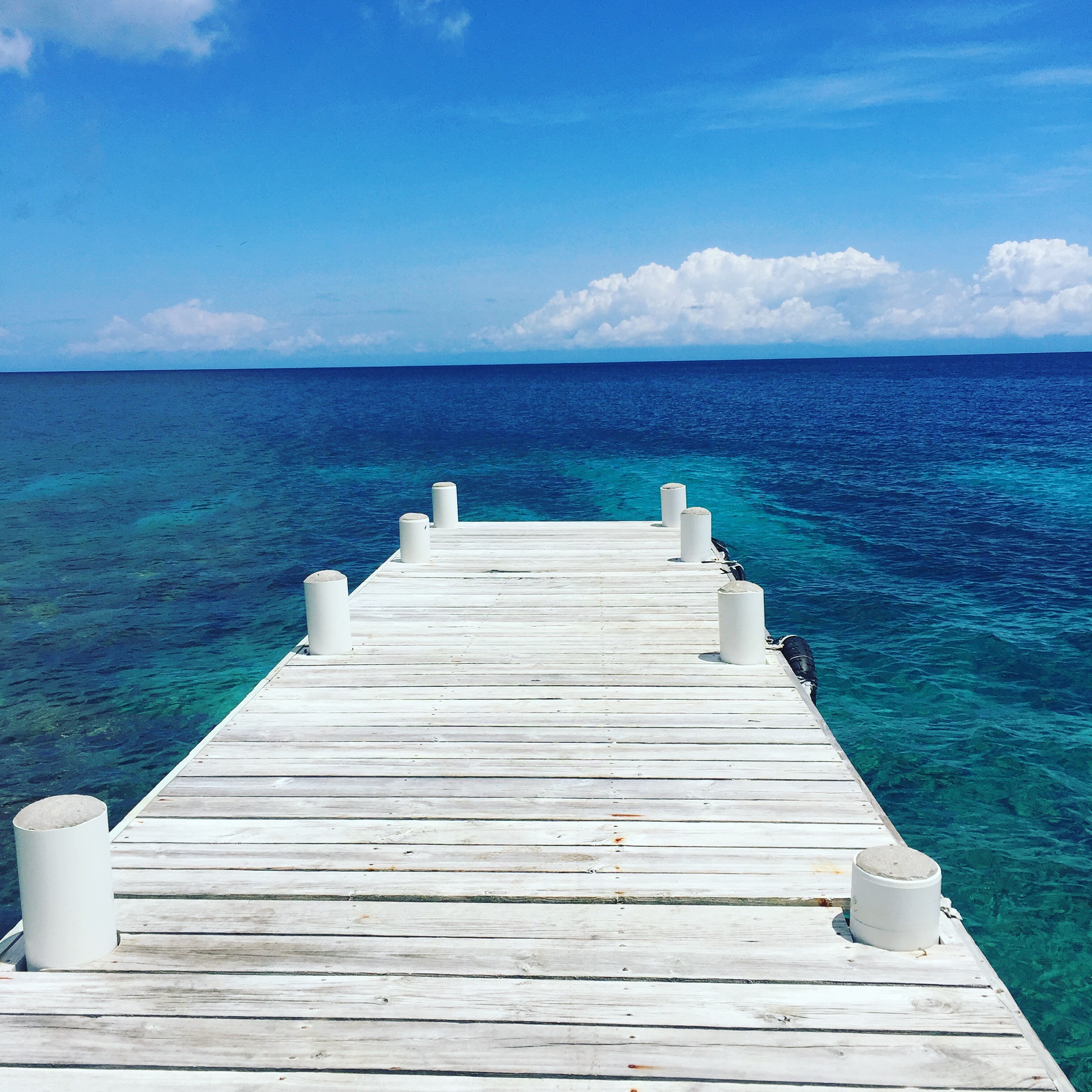
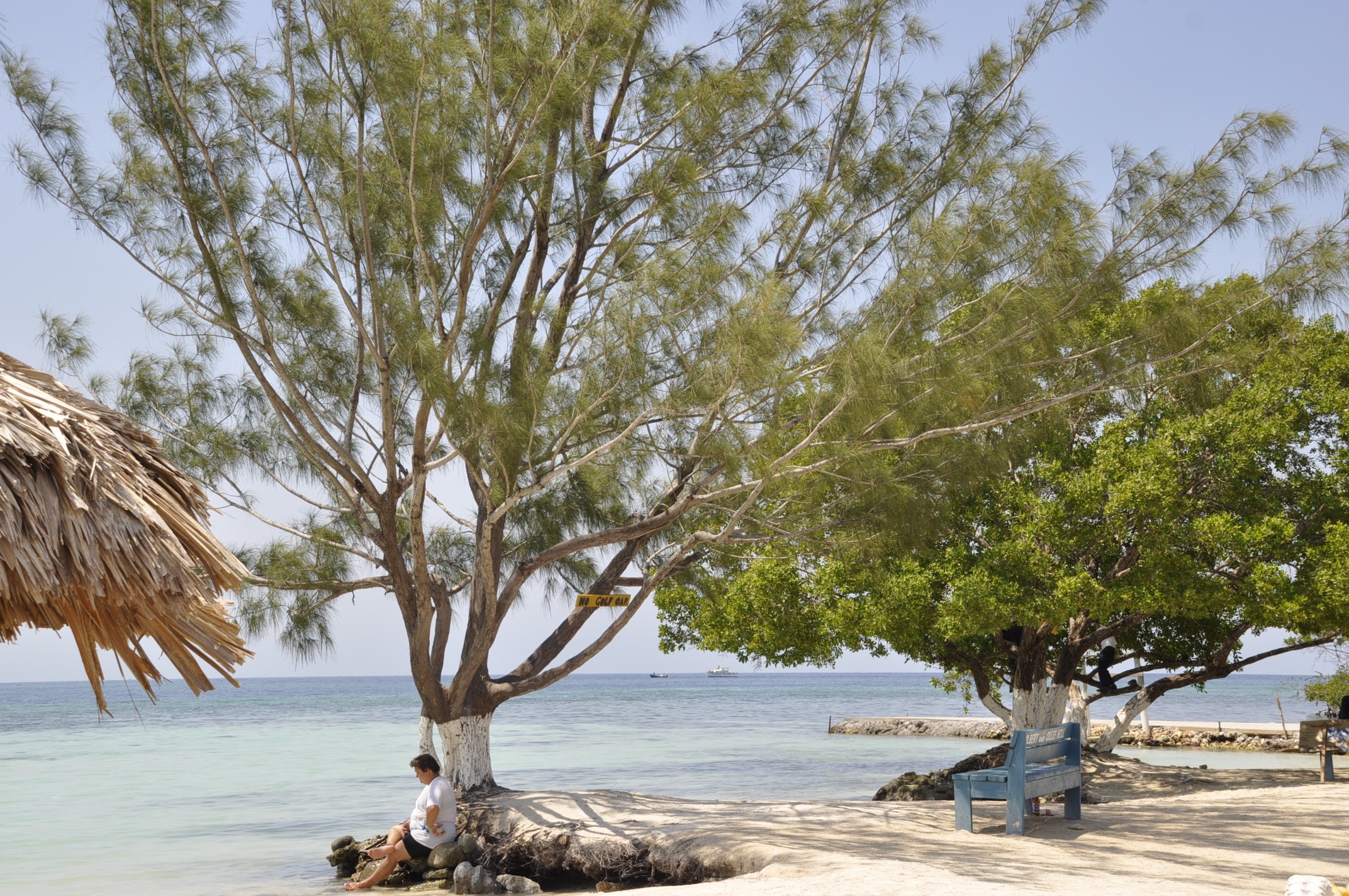
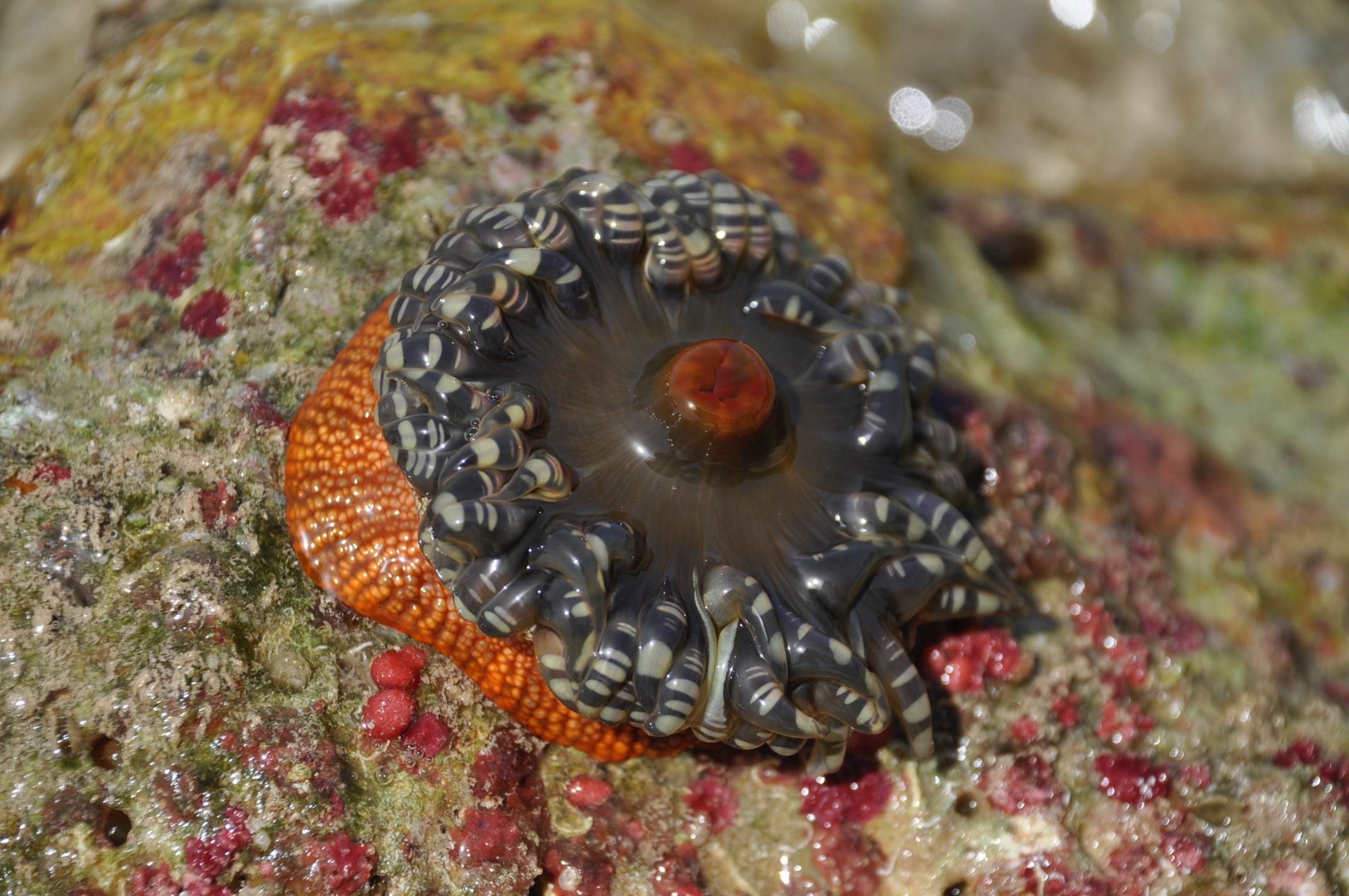
[…] Lastly I have realized that although I am a strict vegetarian ( I don’t eat any fish or meat), and I regularly take bugs outside instead of killing them, I find myself looking everywhere for lionfish so that the dive masters can kill them.(Read about why here.) […]
Spearing of invasive lionfish is recognized by NOAA as a good stop gap measure. However, humans need to consume lionfish on a massive scale to restore ecological balance, and to create that supply, commercial lionfish traps need to obtain NOAA approval. That is the current problem with harvesting lionfish as a industry. ReefSave.org is a volunteer 501(c)(3) organization working on getting NOAA approval for lionfish traps of various designs. We are looking for volunteers AUG 11 – SEP 22, 2018 to SCUBA dive and record data, make observations and collect video and still images of traps. We are working with Dr. Steve Giddings of NOAA to design tests to obtain NOAA approval for commercial use in the U.S. of lionfish traps and for testing hand built designs that can be local built in the Caribbean and Central America as it is not just a U.S. problem. Our volunteers will SCUBA dive to help answer these questions: how does the trap fall through the water, any impact damage, is the Fish Aggregation Device (FAD) effective, what are the feeding patterns, what are the entanglement risks, is by catch a problem, what is the optimum soak time, do some traps work better than others in different depths and bottoms, how does the other marine life react to the trap, is there any risk of ghost fishing? There will also be biological reef surveys before and during the 6 week testing period and training will be provided. Please consider volunteering with the testing or by helping spread the word so that we can find the volunteers to do the tests needed for NOAA approval. Every person who helps will make a big difference.
Thank you for the information. It sounds like a great project. We will definitely consider joining the volunteers. I will do my best to promote the mission as well.
Thanks so much. We are having a teleconference with Dr Steve Gittings of NOAA, inventor of the “lionfish purse trap”
[ http://www.reefsave.org/lionfish-traps.html ] on Thursday at 3 PM to work on finalizing the initial application to the Fisheries Department of St Vincent. When finalized we will publish and announce for the public to review our application. Starting 11 AUG 2018 for the first 3 weeks we will focus on trap interaction with marine life and ocean health and will need the most SCUBA divers, the next 3 weeks, working on deep traps 100′ to 200′ from the surface and continue biological reef survey. We can scale up or scale down the study depending on the number or volunteers and donations. The more volunteers the more data we collect and the more reliable the conclusions that may be drawn by scientists. The purse trap will be the “control” for comparison as it will be at all locations and bottom environments tested, but we are also looking for lionfish trap designs to test. This includes confinement type traps and baited traps, not only non-baited FAD types like the purse trap. Please feel to contact us at info@reefsave.org or telephone me at 786-361-3303 to discuss any aspect of the project and answer any questions. No contribution is too small and all assistance is greatly appreciated.